Geology
Our collections include specimens from important fossil collecting localities mainly in the British Isles. We also have local fossils, from places like Walton-on-the-Naze, and some Ice Age mammal remains from the gravels around Chelmsford. There is also a small collection of rocks and minerals.
Examples from our collections can be seen at the museum in our Modern Collectors case while some others are in our display looking at the Ice Age.
If you have a specimen that you would help identifying, we have a special Essex Geology Reference Collection cabinet kindly supplied by the Essex Rock and Mineral Society that is available on request.
Left-handed whelk
Neptunea angulata (formerly N. contraria)
Characteristic fossil found in the Red Crag deposits at Walton-on-the-Naze. Curiously it has a reverse spiral which twists to the left contrary to modern whelks and other fossil snails. Its thick shell makes it a robust fossil even though it is only 2.3million years old and not completely fossilised. Its red colour comes from the concentration of iron in the shallow water Red Crag deposits.
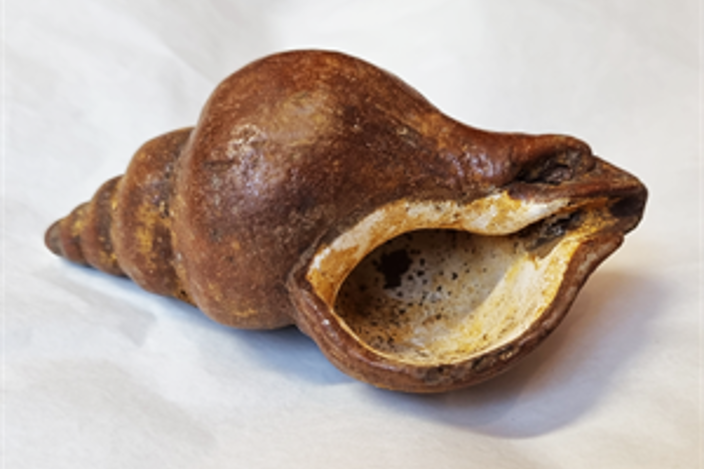
Flint sea urchin
Echinocorys scutata
Sea urchins lived in the Chalk sea bed some 100 million years ago. They made burrows as they fed on particles trapped in the chalk mud.
This one was preserved by being filled with flint that was deposited from silica in the sea water in the burrows around decaying organisms. After the chalk was uplifted and eroded, the tough flint was released.
This fossil would have been brought to Essex along with countless other flint pebbles in the icy flood waters of the ancestral Thames that once flowed across Chelmsford half a million years ago.
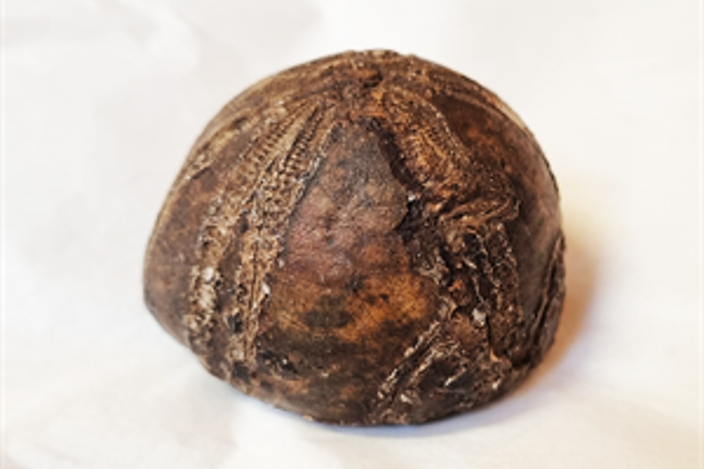
Giant shark tooth
Carcharocles megalodon
Tooth from what is thought to have been the largest shark that has ever lived. It is a prize find from Walton-on-the-Naze from Miocene times 7 to 10 million years ago, from the junction bed between the London Clay and the Red Crag deposits.
Megalodon sharks are thought to have been up to 16 metres long with jaws two metres wide. They preyed on small whales and other marine creatures that lived at the time.
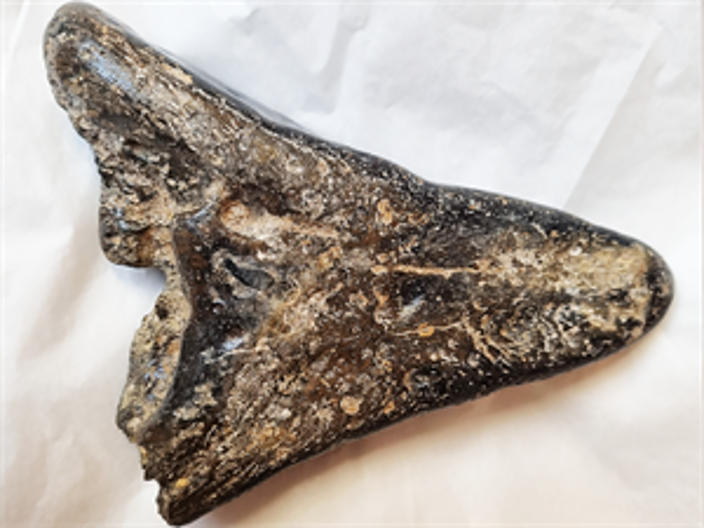
Whale vertebra
Balaena affinis
Whales frequented the Miocene Sea 7 to 10 million years ago. Fragments of whale rib bone, coated in phosphate that makes them shiny, often occur in the junction bed between the London Clay and the Red Crag deposits at Walton-on-the-Naze.
A vertebra, part of the backbone, is a rarer find along with a tympanum (ear bone) that is on display in the Museum. Small whales were part of the diet of megalodon sharks.
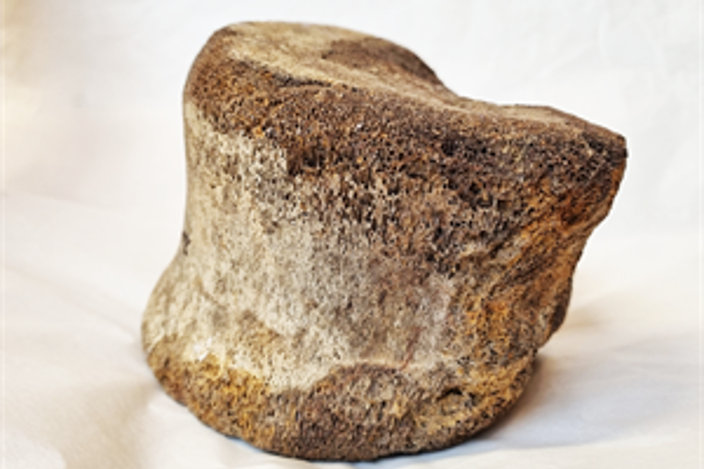
Mastodon tooth
Mammut sp.
Mastodons were large elephant-like, tusk-bearing mammals that lived during the Pliocene and Pleistocene periods up to around 11,000 years ago.
Mastodons were around 2½ metres tall and lived in herds in forests where their diet consisted mainly of tree leaves and woody branches of trees and shrubs, together with mosses.
This specimen was found at Sandon in sand and gravel deposits from the edge of the ice sheet around 450,000 years ago. The dome shaped projections on the crowns of their molars are different to the flat grinding surfaces of mammoth teeth.
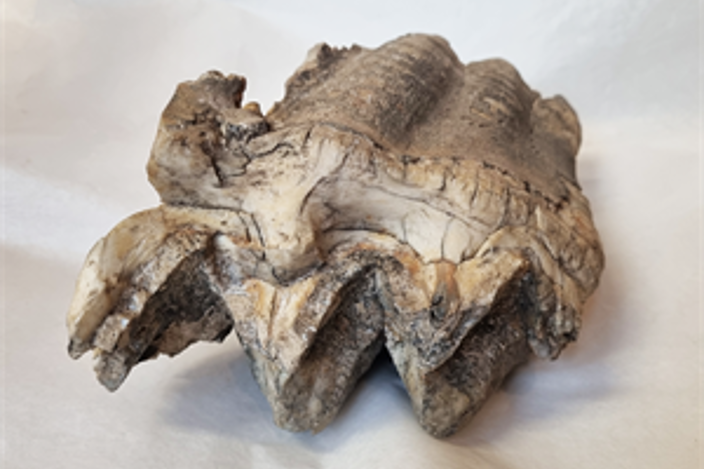
Ammonite
Dactylioceras commune
Ammonites were squid-like creatures that lived in a coiled shell, dying out at the end of the Cretaceous period 66 million years ago.
Ammonites are typical fossils of the Jurassic period. However, no rocks of Jurassic age occur at the surface or beneath Essex. This specimen, found locally, would have originated in the Whitby area of Yorkshire and been brought by the Anglian ice sheet that came from the north and covered most of Essex 450,000 years ago.

